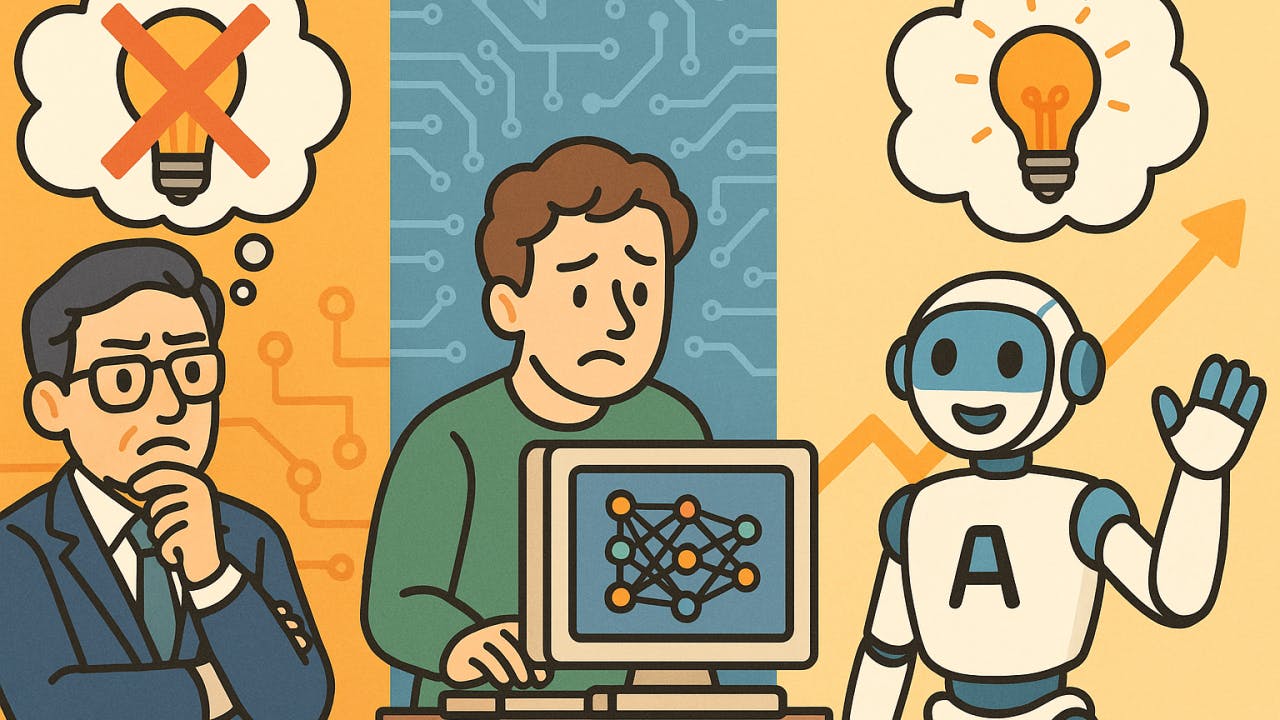In the rapidly evolving landscape of artificial intelligence, it’s easy to get swept up in the latest breakthroughs. But beneath the headlines lies a profound journey, one of pioneering vision, persistent innovation, and the strategic shifts that transformed once-dismissed concepts into the foundational technologies driving our world today. As we stand on the cusp of what could be a new renaissance, understanding this lineage is crucial for every tech leader and AI professional.
I recently reflected on the insights shared by Yann LeCun, a figure often called one of the “godfathers of AI,” who is not only a professor at New York University but also the Chief Scientist of Meta’s Fundamental AI Research Lab. His story offers a compelling narrative on how belief in the power of neural networks, the ability of machines to learn rather than be explicitly programmed, reshaped the future of technology. These methods, once unpopular and dismissed, now underpin modern AI.
The Enduring Power of Pioneering Vision
LeCun’s journey began almost four decades ago, in an era when machine learning, particularly neural networks, was an “unpopular area” in France. His PhD thesis at the Sorbonne proposed an early form of backpropagation algorithms for neural networks, yet he struggled to find collaborators in his home country. The core challenge then was enabling multi-layered neural networks to learn effectively, a problem people in the 1960s had not solved.
This early period highlights the critical importance of conviction when facing skepticism. LeCun sought out international peers like John Hopfield, Jeff Hinton, and Terry Sejnowski, whose work resonated with his own vision. A pivotal meeting with Terry Sejnowski and a subsequent invitation from Jeff Hinton for a postdoc in Toronto marked a turning point, laying the groundwork for what would much later be termed “deep learning”. At Bell Labs in 1988, LeCun achieved breakthrough results, developing a system that could recognize characters and even read checks for ATM deposits, demonstrating the tangible potential of these methods. However, the real challenge wasn’t just building the technology, but convincing others and enabling reproduction across disparate computing environments. This early experience underscores that technical brilliance must be matched with demonstrable, shareable outcomes to drive adoption.
Strategic Rebranding and Mainstream Breakthroughs
The turning point for deep learning’s mainstream acceptance was not just a technical leap, but a strategic rebranding and clever deployment. By 2003, when LeCun became a professor at NYU, the term “neural nets” carried a negative reputation, being seen as “too restrictive”. The solution? A name change to “deep learning”, which helped revive community interest. This move serves as a powerful lesson for leaders: sometimes, effective communication and positioning are as crucial as the innovation itself.
The true breakthrough came in the late 2000s, largely orchestrated by Jeff Hinton, who employed a masterstroke strategy. He strategically placed three of his students as interns in companies with leading speech recognition engines — Microsoft, Google, and IBM. Their mission was singular: replace the existing acoustic modeling part of their engines with a deep learning system. The results were immediate and impactful: “they all got better results”. Within 18 months, deep learning became ubiquitous in smartphone speech recognition. This demonstrates the power of targeted, collaborative deployment and proof-of-concept initiatives to rapidly scale technological adoption across an industry.
The Open Source Imperative in AI Leadership
Today, the debate about AI dominance isn’t merely a competition between nations like the US and China, but fundamentally a competition between the open research and open source world versus proprietary, secretive development. Yann LeCun, operating as both a professor and Chief Scientist at Meta, finds no tension in his dual role because Meta is “very adamant about open research”. This commitment is exemplified by Meta’s open-source foundation model, Llama, whose first version emerged from Paris.
The impact of open sourcing is undeniable. Since summer 2023, the Llama family of models has been downloaded approximately 800 million times. This staggering figure highlights the accelerating power of open collaboration. For senior technology executives and AI professionals, this is a clear signal: embracing open source models and contributing to the open research ecosystem is not just a trend, but a strategic imperative for fostering innovation, attracting talent, and ensuring broader, faster progress across the industry.
Aligning AI with Values: An Engineering Challenge
As AI becomes more powerful, concerns about its alignment with societal values and potential risks are amplified. LeCun frames the challenge of aligning AI behavior as an engineering problem, akin to making airliners safe. He rejects the notion that intelligence inherently correlates with a desire for dominance, even observing this is “false within humans”.
His proposed solution involves objective-driven architectures where systems are given specific goals and operate within “guardrails”. This technical approach suggests that rather than fearing uncontrollable superintelligence, the focus should be on robust design principles. He envisions a future where “good AI” systems, built with proper guardrails, could even counteract “rogue AI” developed without such foresight. This perspective offers a pragmatic, actionable framework for leaders navigating the ethical and safety landscape of AI development: prioritize engineering rigor and thoughtful constraint design over existential fear.
Fostering a New Renaissance
LeCun’s vision for AI is profoundly optimistic. He believes that amplifying human intelligence is intrinsically good and could usher in a new renaissance, much like the printing press transformed society in the 15th century. This resonates deeply with his personal journey, where he learned engineering by building and flying “unusual things”. His message to young people encapsulates this optimism: “Don’t let negative or scary stories stop you.”. He urges future innovators to recognize their power, take charge, and build the future they want to see, emphasizing that even simple ideas can make a difference.
For leaders, this implies fostering environments that encourage experimentation, embrace calculated risks, and instill a sense of empowerment in their teams. It’s about cultivating a culture where the “next big innovation” isn’t solely dependent on current power structures, but on the collective will and ingenuity of individuals.
The journey of deep learning, from an unpopular concept to a global phenomenon, is a testament to the power of vision, strategic adaptation, and relentless pursuit of innovation. As we look ahead, the open-source movement and a pragmatic, engineering-focused approach to AI safety will be paramount in shaping a future where AI truly amplifies human potential.










